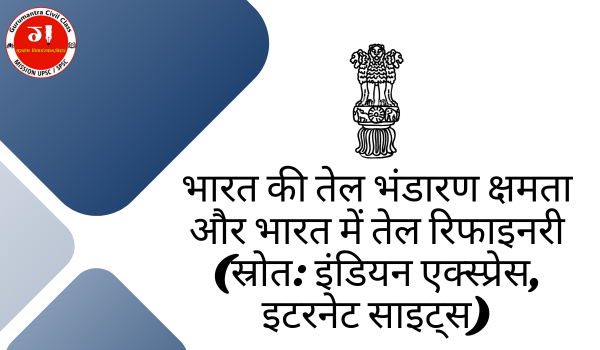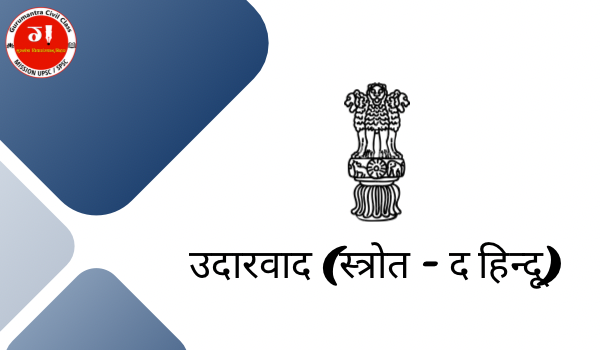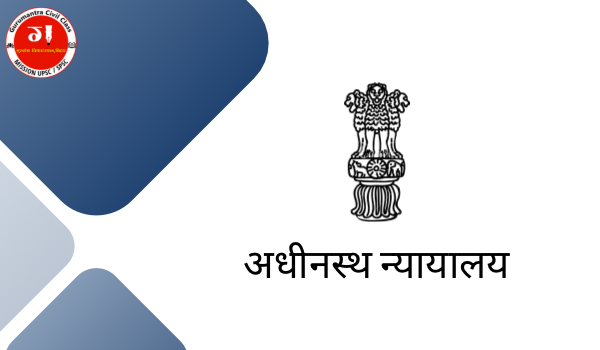भारत में राज्यों के पुनर्गठन का इतिहास और इसमें अधूरापन
By - Gurumantra Civil Class
At - 2024-05-10 10:13:24
भारत में राज्यों के पुनर्गठन का इतिहास और इसमें अधूरापन (The history of reorganization of states in India and its incompleteness.)
भारत में राज्यों के पुनर्गठन का इतिहास और इसमें अधूरापन - Youtube Class
इतिहास की दृष्टिकोण से - (From a historical perspective -)
1920 के दशक में कांग्रेस के नेतृत्व को लगा कि, जातीय-भाषाई अस्मिताओं पर जोर दे कर वे उपनिवेशवाद विरोधी मुहिम को एक लोकप्रिय जनाधार दे सकते हैं। अतः कांग्रेस ने अंग्रेजों द्वारा रचे गये ‘औपनिवेशिक प्रांत’ की जगह ख़ुद को ‘प्रदेश’ नामक प्रशासनिक इकाई के इर्द-गिर्द संगठित किया। यह ‘प्रदेश’ नामक इकाई अपने बुनियादी चरित्र में अधिक लोकतांत्रिक, सांस्कृतिक (जातीय और भाषाई) अस्मिता के प्रति अधिक संवेदनशील और क्षेत्रीय अभिजनों की राजनीतिक महत्त्वाकांक्षाओं के प्रति जागरूक थी। इस तरह 'नये भारत' की कल्पनाशीलता को उसका आधार मिला। कांग्रेस के इस पुनर्गठन के बाद राष्ट्रीय आंदोलन भाषाई अस्मिताओं से सुनियोजित पोषण प्राप्त करने लगा। असहयोग आंदोलन की जबरदस्त सफलता के पीछे मुख्य कारण यही था। 1928 में मोतीलाल नेहरू की अध्यक्षता में एक समिति गठित की गई, जिसे काग्रेस का पूरा समर्थन था। इस समिति ने भाषा, जन-इच्छा, जनसंख्या, भौगोलिक और वित्तीय स्थिति को राज्य के गठन का आधार माना।
In the 1920s, the leadership of the Congress realized that by emphasizing on caste and linguistic identities, they could lend popular support to the anti-colonial movement. Therefore, the Congress reorganized itself around the administrative unit called 'Pradesh' instead of the British-created 'Provinces.' This 'Pradesh' unit was more democratically inclined, culturally sensitive (to caste and linguistic identities), and aware of the political aspirations of regional communities in its foundational character. Thus, it provided a foundation for the imaginative concept of 'New India.' Following this restructuring by Congress, the national movement began to draw nourishment from linguistic identities. The phenomenal success of the Civil Disobedience Movement was largely attributed to this shift. In 1928, under the chairmanship of Motilal Nehru, a committee was formed with full support from Congress. This committee considered language, popular sentiment, demographics, geography, and financial status as the basis for state formation.
भाषा के आधार पर राज्यों का पुनर्गठन की मांग स्वतंत्रता के पश्चात फिर से जोर पकड़ने लगी ।इससे श्याम कृष्ण धर आयोग का गठन किया गया। धर आयोग ने भाषाई आधार पर राज्यों के पुनर्गठन का विरोध किया था। उसका मुख्य जोर प्रशासनिक सुविधाओं को आधार बनाने पर था। किन्तु तत्कालीन जनाकाक्षाओं को देखते हुए ही दिसंबर 1948 में जेबीपी आयोग (जवाहर लाल नेहरू, बल्लभभाई पटेल, पट्टाभिसीतारमैया) का गठन किया गया। यह समिति मुख्य रूप से एस.के धर समिति की एक सिफारिश के विस्तृत विश्लेषण पर केंद्रित है। इस समिति ने एस.के धर समिति की सिफ़ारिश की जांच की और अप्रैल 1949 के महीने में एक रिपोर्ट प्रस्तुत की। इस समिति के अनुसार, भाषा के आधार पर राज्यों का पुनर्गठन देश की संभावनाओं के लिए अच्छा नहीं है।
The demand for reorganization of states on the basis of language started gaining momentum again after independence. Due to this, Shyam Krishna Dhar Commission was formed. The Dhar Commission had opposed the reorganization of states on linguistic basis. Its main emphasis was on creating administrative facilities. But keeping in view the then public aspirations, JBP Commission (Jawahar Lal Nehru, Vallabhbhai Patel, Pattabhisitaramaiah) was formed in December 1948. This committee mainly focuses on the detailed analysis of a recommendation of the S.K. Dhar Committee. This committee examined the recommendations of the S.K. Dhar Committee and submitted a report in the month of April 1949. According to this committee, reorganization of states on the basis of language is not good for the country's prospects.
श्री रामालु का अनशन (Shri Ramalu's hunger strike)
जीबीपी समिति के रिपोर्ट के बाद श्री रामालु आंध्र राज्य के लिए अनशन शुरू करने की बात किये ।लीसा मिशेल के क़िताब 'लैग्वेज, इमोशन एंड पॉलिटिक्स इन इंडिया' के अनुसार 1946 से 1952 के बीच उन्होंने पांच बार अनशन किए। उनके पहले चार अनशन दलितों के मंदिरों में प्रवेश को लेकर थे और अंतिम अनशन मद्रास प्रांत को विभाजित कर अलग तेलुगु भाषी राज्य आंध्र के निर्माण के लिए।
After the report of the JVP Committee, Shri Ramalu discussed starting a hunger strike for the state of Andhra Pradesh. According to Lisa Mitchell's book "Language, Emotion, and Politics in India," between 1946 and 1952, he went on hunger strike five times. His first four hunger strikes were related to the entry of Dalits into temples, and the final hunger strike was for the division of the Madras Province to create a separate Telugu-speaking state of Andhra.
श्रीरामालु ने पहला अनशन मार्च 1946 में किया। वह 10 दिन चला। उनकी मांग थी, नेल्लोर के श्री वेणुगोपाल स्वामी मंदिर में दलितों को प्रवेश दिया जाए। उसी साल दिसंबर में उन्होंने दूसरा अनशन किया और मद्रास प्रांत के सभी मंदिर दलितों के लिए खोलने की मांग की। यह अनशन 19 दिन चला। अंत में गांधीजी के कहने पर ही उन्होंने अनशन तोड़ा। 1948 और 1949 में उनका तीसरा और चौथा अनशन चला। मंदिरों में दलितों के लिए हर माह एक दिन मुकर्रर करने की मांग की। श्री वेणुगोपाल स्वामी मंदिर में दलितों को प्रवेश देने की उनकी मांग पूरी भी हुई।
हालांकि श्रीरामलु कुछ नया नहीं मांग रहे थे। ब्रिटिश काल में 19वीं सदी के आरंभ से ही यह आंदोलन चला था। ब्रिटिशों ने अंडमान, श्रीलंका, ओडिशा समेत दक्षिण भारत के सभी इलाक़ों को मिलाकर मद्रास नामक एक प्रांत बनाया। इसके प्रमुख को तब प्रेसिडेंट कहा जाता। इसलिए यह प्रांत मद्रास प्रेसिडेंसी कहलाया। बाद में ब्रिटिशों ने प्रेसिडेंट के पद का नाम बदलकर गवर्नर कर दिया। मद्रास प्रेसिडेंसी को काटकर पृथक तेलुगु राज्य बनाने की मांग के लिए छिटपुट आंदोलन चलता रहा।
Shriramalu initiated his first hunger strike in March 1946, which lasted for 10 days. His demand was to allow entry for Dalits into the Sri Venugopala Swamy temple in Nellore. Later that same year, in December, he began his second hunger strike, demanding the opening of all temples in the Madras Province for Dalits. This hunger strike lasted for 19 days, and he ended it upon Gandhi's insistence. In 1948 and 1949, he conducted his third and fourth hunger strikes, demanding a monthly day dedicated to Dalits' entry into temples. His demand for Dalits' entry into the Sri Venugopala Swamy temple was eventually met.
However, Shriramalu was not making any new demands. This movement had been ongoing since the early 19th century during British rule. The British amalgamated all regions of South India, including Andaman, Sri Lanka, and Odisha, to form a province named Madras. The head of this province was then referred to as the President, hence it was called the Madras Presidency. Later, the British changed the title of the head from President to Governor. The movement for the separation of the Telugu-speaking state from the Madras Presidency continued through various movements.
पोट्टी श्रीरामुलु का आमरण अनशन करने के बाद 16 दिसंबर 1952 को निधन हो गया था।
इसके परिणामस्वरूप 1 अक्टूबर, 1953 को तेलुगु भाषी लोगों के लिए भाषाई आधार पर आंध्र राज्य नामक पहले राज्य का निर्माण हुआ था।बाद में इसका नाम बदलकर आंध्र प्रदेश कर दिया गया था।
After Potti Sriramulu's fast unto death, he passed away on December 16, 1952. As a result, on October 1, 1953, the first state based on linguistic basis, named Andhra State, was created for Telugu-speaking people. Later, its name was changed to Andhra Pradesh.
आंध्र प्रदेश राज्य के निर्माण के बाद भाषा के आधार पर राज्यों का मांग भारत में दिनों दिन बढ़ती गई । जिसके परिणामस्वरुप सरकार ने फजल अली के अध्यक्षता में फजल अली आयोग बनाया, जिसका कार्य भाषा के आधार पर राज्यों के निर्माण की संभवता को ढूंढना था ।
After the formation of Andhra Pradesh state, the demand for states on the basis of language increased day by day in India. As a result of which the government formed the Fazal Ali Commission under the chairmanship of Fazal Ali, whose task was to find the possibility of creating states on the basis of language.
1 अक्टूबर 1953 को आंध्र प्रदेश भाषा के आधार पर गठित होने वाला पहला राज्य बना IOn October 1, 1953, Andhra Pradesh became the first state to be formed on the basis of language.
फ़ज़ल अली आयोग - (Fazal Ali Commission -)
सरकार ने 22 दिसम्बर 1953 को राज्य पुनर्गठन आयोग की नियुक्ति की घोषणा की ।
The government announced the appointment of the State Reorganization Commission on 22 December 1953.
फज़ल अली आयोग जिसे राज्य पुनर्गठन आयोग भी कहा जाता है, की स्थापना यह जांच करने के लिए की गई थी कि राज्य अलगाव के लिए भाषाई आधार पर विचार किया जा सकता है या नहीं। केएम पणिक्कर और एचएन कुंजरू इसके अन्य दो
सदस्य थे।
The Fazal Ali Commission, also known as the States Reorganization Commission, was set up to examine whether linguistic grounds could be considered for state separation. KM Panikkar and HN Kunzru were its other two members.
इसने सितंबर 1955 में अपनी रिपोर्ट प्रस्तुत की और राज्य पुनर्गठन के आधार के रूप में भाषा को व्यापक रूप से स्वीकार किया।
In September 1955, it submitted its report and widely accepted language as the basis for state reorganization.
इसने चार प्रमुख कारकों की पहचान की जिन पर राज्य पुनर्गठन की किसी भी योजना में विचार किया जाना चाहिए (It identified four main factors that should be considered in any plan for state reorganization) :
1. देश की एकता और सुरक्षा को बनाए रखना और मजबूत करना। (To maintain and strengthen the unity and security of the country.)
2. भाषाई और सांस्कृतिक एकरूपता (Linguistic and cultural uniformity.)
3. वित्तीय, आर्थिक और प्रशासनिक विचार। (Financial, economic and administrative considerations.)
4. प्रत्येक राज्य के साथ-साथ पूरे देश के लोगों के कल्याण की योजना बनाना और उसे बढ़ावा देना। (To plan and promote the welfare of the people of each State as well as the country as a whole.)
फ़ज़ल अली आयोग ने मूल संविधान के तहत राज्यों और क्षेत्रों के चार गुना वर्गीकरण को समाप्त करने और 16 राज्यों और 3 केंद्र प्रशासित क्षेत्रों के निर्माण का सुझाव दिया । (The Fazal Ali Commission suggested the abolition of the fourfold classification of states and territories under the original Constitution and the creation of 16 states and 3 union territories.)
इसने यह भी सिफारिश की कि राजप्रमुख की संस्था और पूर्व रियासतों के साथ विशेष समझौतों को समाप्त कर दिया जाना चाहिए।( It also recommended that the institution of Rajpramukh and special agreements with the former princely states should be abolished.)
इसने यह भी सिफारिश की कि अनुच्छेद 371 के अनुसार भारत सरकार द्वारा सामान्य नियंत्रण को निरस्त किया जाना चाहिए।
It also recommended that the general control by the Government of India as per Article 371 should be abrogated.
फजल अली आयोग रिपोर्ट के महत्व -(Importance of Fazal Ali Commission Report) :-
1. इसने 'एक भाषा, एक राज्य' सिद्धांत को खारिज कर दिया। (It rejected the 'one language, one state' principle.)
2. इसकी स्थिति यह थी कि देश की राजनीतिक इकाइयों के किसी भी पुनर्निर्धारण में भारत की एकता प्राथमिक विचार होनी चाहिए। (Its position was that the unity of India should be the primary consideration in any redefinition of the political units of the country.)
3. भारत सरकार ने इन सिफ़ारिशों को मामूली बदलावों के साथ स्वीकार कर लिया। (The Government of India accepted these recommendations with minor changes.)
4. 1956 के राज्य पुनर्गठन अधिनियम और 1956 के 7वें संवैधानिक संशोधन अधिनियम ने भाग ए और भाग बी राज्यों के साथ-साथ भाग सी राज्यों के बीच अंतर को समाप्त कर दिया। (The States Reorganization Act of 1956 and the 7th Constitutional Amendment Act of 1956 abolished the distinction between Part A and Part B states as well as Part C states.)
4. कुछ को पड़ोसी राज्यों में मिला दिया गया, जबकि अन्य को केंद्र शासित प्रदेश के रूप में नामित किया गया। (Some were merged into neighboring states, while others were designated as union territories.)
अंततः फ़ज़ल अली आयोग की सिफ़ारिशों को भारत सरकार ने मामूली बदलावों के साथ स्वीकार कर लिया। परिणामस्वरूप, आयोग की सिफारिशों को लागू करने के लिए राज्य पुनर्गठन अधिनियम 1956 संसद द्वारा पारित किया गया। इसके परिणामस्वरूप, 1 नवंबर, 1956 को 14 राज्य और छह केंद्र शासित प्रदेश बनाये गये।
Ultimately the recommendations of the Fazal Ali Commission were accepted by the Government of India with minor changes. As a result, the States Reorganization Act 1956 was passed by Parliament to implement the recommendations of the Commission. As a result, 14 states and six union territories were created on November 1, 1956.
Note - SRC ने बंबई और पंजाब के विभाजन का विरोध किया था।
भाषाई मानदंडों के आधार पर राज्यों के पुनर्गठन के लाभ - (Benefits of reorganization of states on the basis of linguistic norms -)
1. भारतीय संघ के साथ लोगों का मनोवैज्ञानिक एकीकरण बनाया : जब भारत को स्वतंत्रता मिली, तो कई समूह अपनी भाषाई पहचान की सुरक्षा और संरक्षा को लेकर आशंकित थे। इन समूहों को भाषाई संगठन के माध्यम से समझाया जा सकता है।
Created psychological integration of people with the Indian Union: When India gained independence, many groups were apprehensive about the safety and security of their linguistic identity. These groups can be explained through linguistic organization.
2. प्रशासन में आसान: इसने एकजुट प्रशासनिक इकाइयों का निर्माण किया क्योंकि स्वतंत्रता के बाद कम साक्षरता (लगभग 10%) आदर्श थी और स्थानीय भाषाओं के उपयोग ने प्रशासन को लोगों के लिए सुविधाजनक और सुलभ बना दिया।
Ease of Administration: It created cohesive administrative units as low literacy (about 10%) was the norm after independence and the use of local languages made administration convenient and accessible to the people.
पाकिस्तान और श्रीलंका के विपरीत, जहां भाषाई भावनाओं के कारण विभाजन और गृहयुद्ध हुआ, भारत के भाषाई पुनर्गठन ने एक मजबूत भारतीय संघ का गठन किया। Unlike Pakistan and Sri Lanka, where linguistic sentiments led to partition and civil war, the linguistic reorganization of India led to the formation of a strong Indian union.
हालाँकि, राज्यों का पुनर्गठन एक अधूरा कार्य रहा है क्योंकि भाषाई पुनर्गठन के परिणाम लंबे समय में काफी सकारात्मक नहीं रहे हैं: -
However, the reorganization of states has been an incomplete task as the results of linguistic reorganization have not been quite positive in the long run:-
1. प्रांतों के असमान आकार के होना : - उत्तर प्रदेश और उत्तर पूर्वी राज्यों जैसे राज्यों में अंतर दिखाई देता है। इससे संसाधन वितरण अपूर्ण हो गया है। कुछ राज्य ध्यान आकर्षित कर रहे हैं, जबकि कुछ राज्य लापरवाही में डूबे हुए हैं।
Uneven size of provinces: - The difference is visible in states like Uttar Pradesh and North Eastern states. Due to this, resource distribution has become incomplete. Some states are attracting attention, while some states are drowning in negligence.
2. भाषा की विविधता में बहुत ज्यादा संख्या होना: भारत में हैं 600 से ज्यादा भाषाएं और कई बोलियां; सभी समूहों की भाषाई आकांक्षाओं को संतुष्ट करना बिल्कुल असंभव है। उदाहरण के लिए भाषा के आधार पर महाराष्ट्र और कर्नाटक की सीमाओं के पुनर्वितरण की मांग।
The vast diversity of languages: With over 600 languages and numerous dialects in India, satisfying the linguistic aspirations of all groups is virtually impossible. For example, demands for the reorganization of boundaries based on language between Maharashtra and Karnataka.
3. क्षेत्रवाद की ताकतों को बढ़ावा दिया: - परिणामस्वरूप, भारत अभी भी एक राष्ट्र बन रहा है और इसकी उप-राष्ट्रीय भावनाओं को भारतीय एकता और अखंडता पर प्राथमिकता दी जाती है।
Empowered regional forces: As a result, India is still evolving as a nation, with its sub-national sentiments prioritizing Indian unity and integrity.
हालांकि हाल ही में तेलंगाना, छत्तीसगढ़, उत्तराखंड, झारखंड जैसे नए राज्यों का निर्माण विकास संबंधी जरूरतों पर आधारित है, जहां यह पाया गया कि पर्याप्त संसाधन होने के बाद भी राज्य अपने मूल राज्य के बाकी हिस्सों की तरह विकसित नहीं हो सके।
However, recently the creation of new states like Telangana, Chhattisgarh, Uttarakhand, Jharkhand is based on developmental needs, where it was found that even after having adequate resources, the states could not develop like the rest of their parent state.
हाल के दिनों में बेलगावी मुद्दे ने कर्नाटक और महाराष्ट्र के बीच राजनीतिक खींचतान पैदा कर दी है। बेलगावी कर्नाटक का एक क्षेत्र है, जहां बड़ी संख्या में मराठी भाषी आबादी रहती है और यह कर्नाटक और महाराष्ट्र के बीच पांच दशक पुराने सीमा विवाद का केंद्र रहा है, जिसके सुप्रीम कोर्ट के अंतिम आदेश का अभी भी इंतजार है।
In recent times, the Belagavi issue has created a political tussle between Karnataka and Maharashtra. Belagavi, a region of Karnataka with a large Marathi-speaking population, has been at the center of a five-decade-old border dispute between Karnataka and Maharashtra, the final order of which is still awaited from the Supreme Court.
Comments
Releted Blogs

भारत की तेल भंडारण क्षमता और भारत में तेल रिफाइनरी (स्रोत: इंडियन एक्स्प्रेस, इटरनेट साइट्स)
By - Admin
भारत की तेल भंडारण क्षमता कितनी है ? भारत की तेल रिफाइनरी व्यवस्था कैसी है?

उदारवाद (स्त्रोत - द हिन्दू)
By - Admin
वर्तमान युग में उदारवाद को सुचारू करना क्यों आवश्यक है ?

